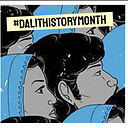Bheem Sena — “Bahujans, India is ours! “
“We on our part cannot agree to be liquidated so easily to oblige our oppressors. The Scheduled Castes are the oldest inhabitants of this country and an integral part of its economy. Our unpaid labour has made this country what it is today, so, therefore, we have a right to exist and thrive in this land. We cannot do so unless our existence is recognised and we are given the right to send our own representatives to parliament, legislatures and other elected bodies”. -B. Shyam Sunder, Founder President, Bharatiya Bhim Sena
“Bahujans, India is ours! “ — Bheem Sena slogan
The practice of Apartheid in South Africa is a racial one and untouchability in India is Apartheid that is religious in nature. This “ghetto Apartheid” has been in operation for three thousand years in India. — B.Shyam Sundar
At a large gathering celebrating Babasaheb Ambedkar’s birth anniversary, Bheem Sena was founded by B. Shyam Sundar on 29th April 1968 in Gulbarga district in the state of Karnataka. The primary objective of launching Bheem Sena was to counteract the extreme atrocities perpetrated against Dalits by the dominant caste groups in the region and elsewhere. Bheem Sena insisted that they were a group based on truth and non-violence but would prioritise self-defence for a helpless mass of people subjected to caste atrocities, one after another. But Bheem Sena grew into an organisation with many other goals. The other objectives of Bheem Sena included asks for sociopolitical control over their own villages, separate electorates for oppressed people, separate elections and even a separate university.
In the history of the Dalit movement, Bheem Sena is one of the radical initiatives. It is on par with the Dalit Panther movement in Maharashtra, for example. Like the Panthers, Syam Sundar himself was a long-time activist, thinker, and writer and was quite established in the community well before Bheem Sena was founded. He had fought in the independence movement alongside Sarojini Naidu and others, he had begun and expanded the Dalit — Muslim unity movements and worked with Dalit youth across states.
Photo Courtesy: Prakash Moolbharathi, Wikicommons
Once Bheem Sena was established, it spread like wildfire to various cities in the state and Shyam Sundar popularly came to be known as the father of the Dalit movement in Karnataka. Bheem Sena’s assertion gave the landowning castes much to be fearful about. Bheem Sena allowed the Dalit youth of Karnataka to finally walk through their areas with their head held high. Something, that at that time that could not be said for much of rural India.
Unfortunately, after the death of Shyam Sundar, though, Bheem Sena lost its vigour. However, it continues to be one of the most revered movements in the history of the Dalit movement in India.
This post was written for Dalit History Month by Ashwini KP. Ashwini is a researcher and works on issues related to human rights, Dalit women, caste and social exclusion. You can reach her at ashwini.kp16@gmail.com
Sources:
- Shetty, VT Rajshekar. Dalit movement in Karnataka. Vol. 1. Published for the Christian Institute for the Study of Religion and Society, Bangalore, by the Christian Literature Society, 1978.
- Emerging Political Leadership Of Backward Classes In Karnataka, By Dr. Prahalladappa M.H.
- https://www.thehindu.com/opinion/lead/sanjay-hegde-on-br-ambedkar-the-hero-who-built-an-independent-india/article7099218.ece
